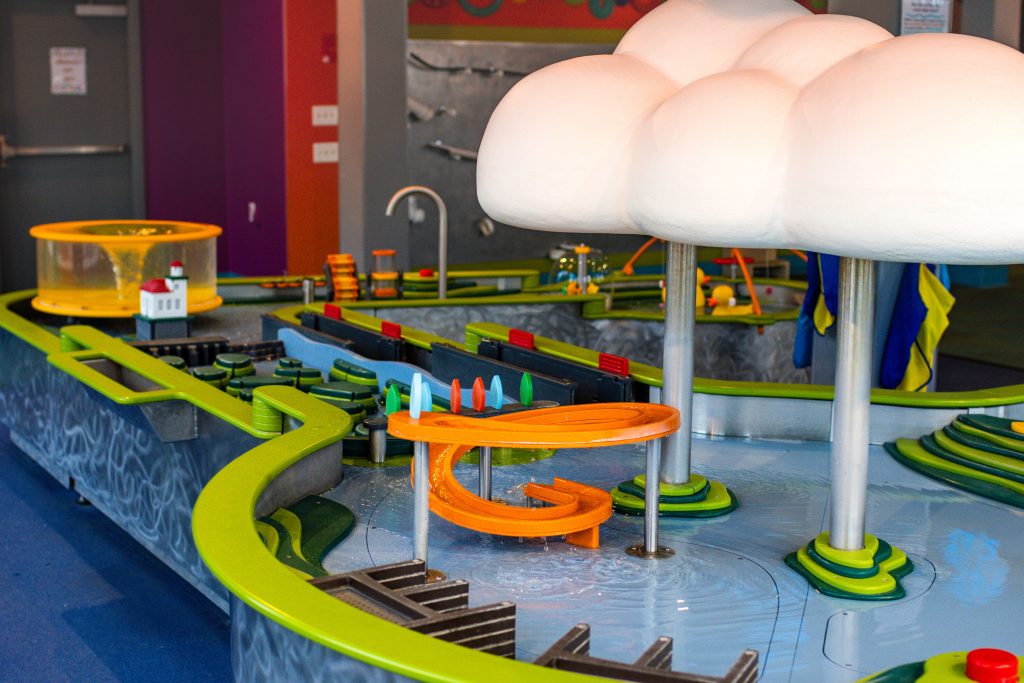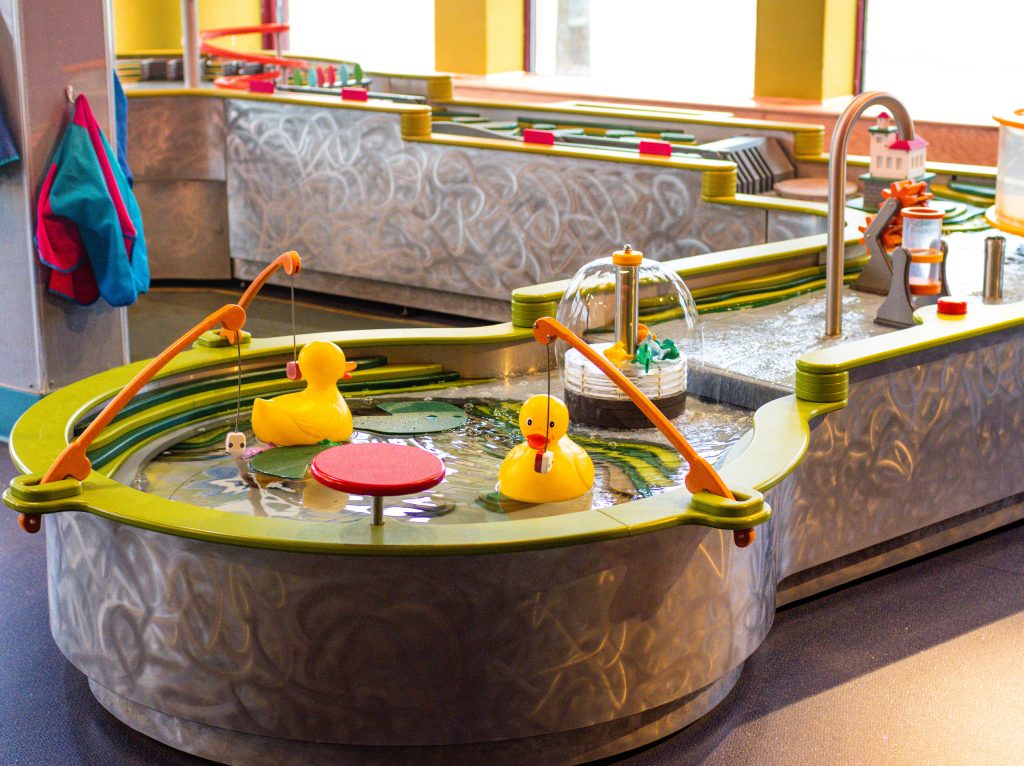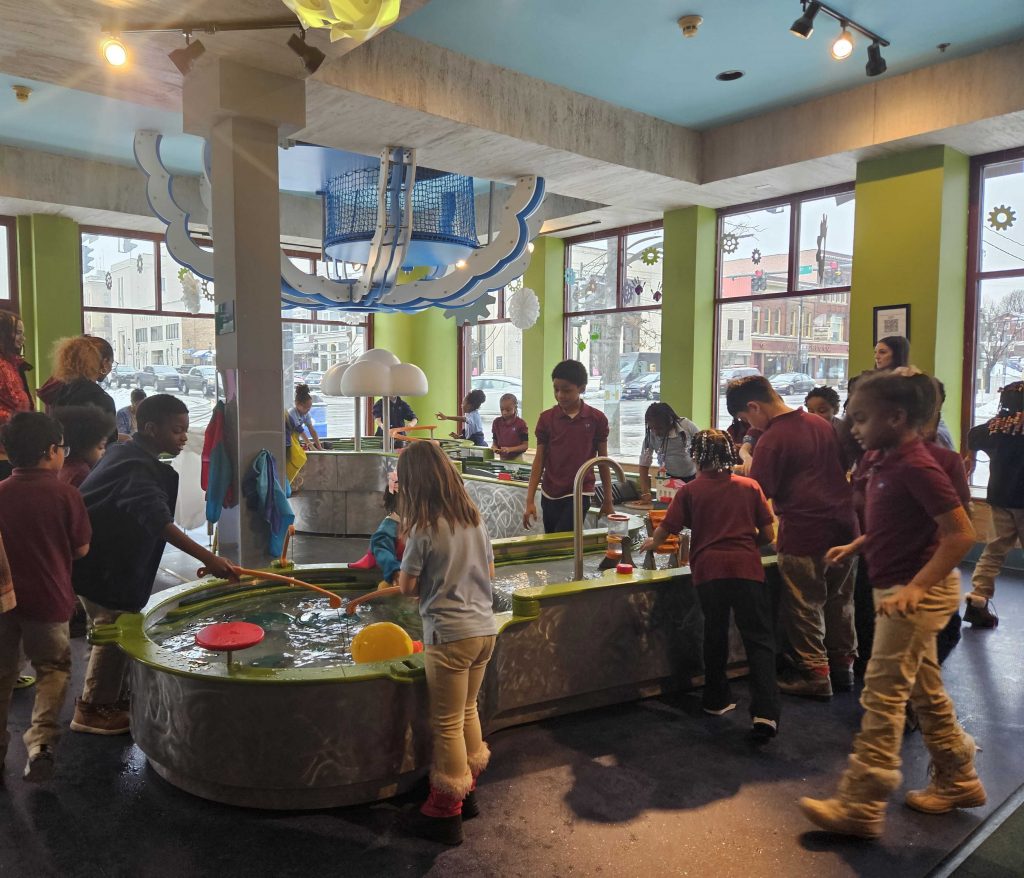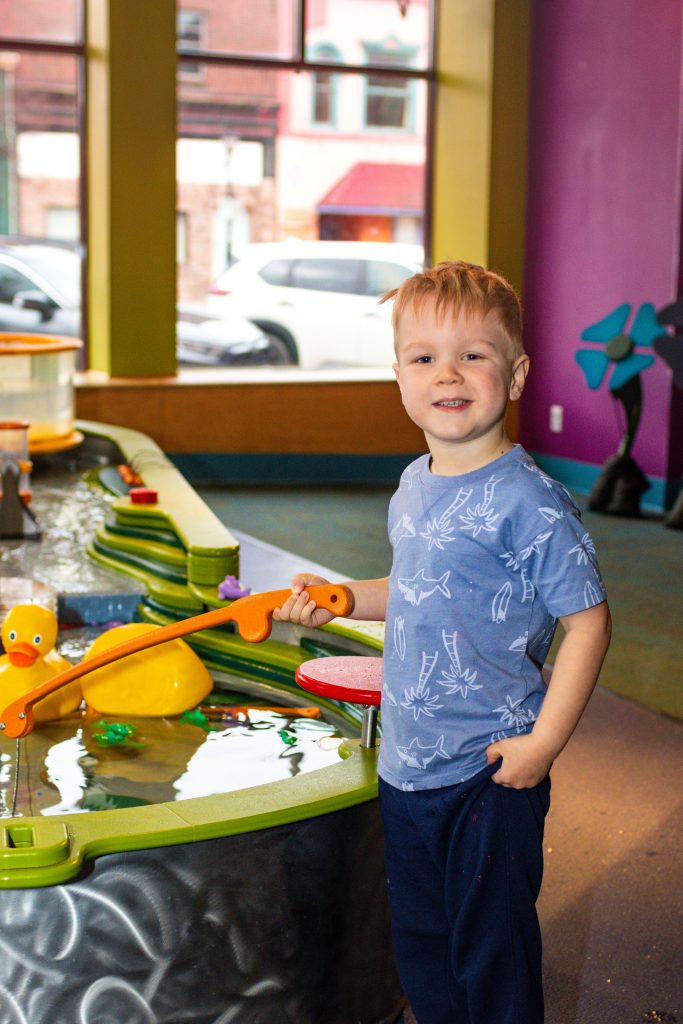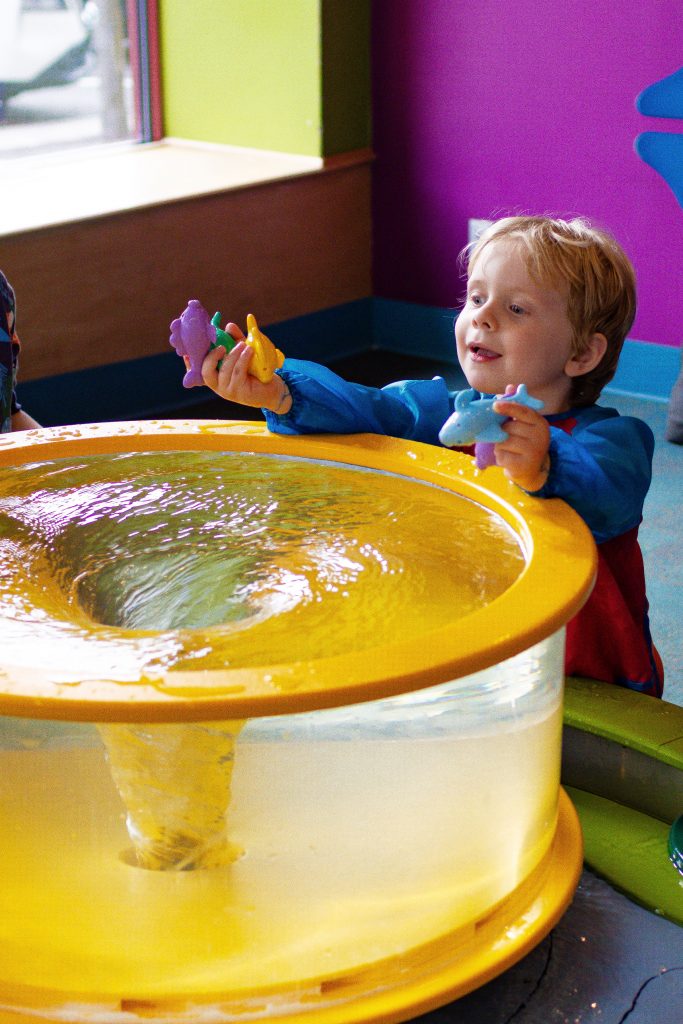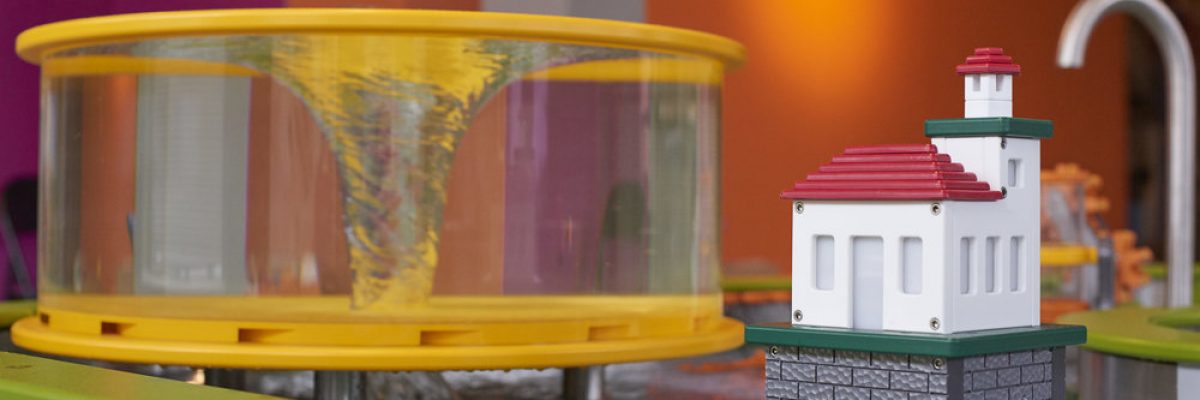Splish, Splash, Learn: The Power of Water Play at CMOO’s Water Table Exhibit
At the Children’s Museum of Oswego (CMOO), one of the most beloved exhibits is our interactive water table—where splashes and smiles go hand in hand with learning and development. While it may look like just good old-fashioned fun, water play is packed with developmental benefits that support early childhood growth in powerful and lasting ways.
Water play encourages hands-on exploration, which helps young children learn cause and effect, develop fine motor skills, and begin to understand basic scientific concepts like flow, volume, and gravity. As children scoop, pour, splash, and redirect the current, they’re not only having fun—they’re experimenting, problem-solving, and learning how to think critically.
This kind of open-ended play also supports language development. As children describe what they’re doing—“It’s spilling!” “I made a river!”—they build vocabulary and communication skills, especially when engaged with peers or caregivers.
Moreover, water play fosters emotional regulation. The calming sound and sensation of water help children relax and focus. This can be especially helpful for children who are overstimulated or working through big feelings. Water tables naturally promote collaboration and social skills, too, as children learn to share space and tools, take turns, and work together on shared play goals.
Whether they’re constructing dams, launching floating toys, or simply enjoying the sensory experience, children at our water table are strengthening a range of essential developmental skills.
At CMOO, we believe that play is the foundation of learning—and our water table is the perfect example of how joyful, hands-on exploration can create deep and meaningful educational experiences.
Next time you visit, don’t forget to roll up your sleeves and let your little one’s dive into discovery!
